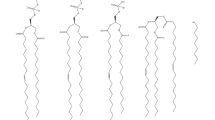Abstract
Physiologically-based pharmacokinetic (PBPK) modeling has been widely used in human risk assessment and in early drug development to predict human PK from in vitro and/or in vivo animal data. Recently, the application of PBPK modeling has been extended to the evaluation of drug–drug interactions. For most xenobiotic agents, the PK event scale such as elimination is in hours or days. This is much longer than the transit time of the agent in the body, and a PBPK model can be significantly simplified through lumping based on the physiochemical properties, mass transfer, and biotransformation. However, for a xenobiotic agent with a short PK event scale, e.g. in minutes, such an approach is not applicable. In this manuscript, the authors used the observed PK data from an ultrasound contrast agent to illustrate the role of a short PK event scale in the development of a suitable PBPK model. The model development process showed that a PBPK model assuming uniform venous and arterial blood pools, with a static lung model including alveolar and tissue regions, was unable to adequately capture the characteristics of the PK of the agent. Detailed information describing the pulmonary and cardiovascular circulation, and a heterogeneous dynamic lung model became necessary for the model. This exercise once again demonstrates the importance of the principles and methodologies that have been established since the 1960s that need to be followed during PBPK model development.





Similar content being viewed by others
References
Bischoff KB, Dedrick RL (1968) Thiopental pharmacokinetics. J Pharm Sci 57(8):1346–1351
Rowland M, Peck C, Tucker G (2011) Physiologically-based pharmacokinetics in drug development and regulatory science. Annu Rev Pharmacol Toxicol 51:45–73
Zhao P, Rowland M, Huang SM (2012) Best practice in the use of physiologically based pharmacokinetic modeling and simulation to address clinical pharmacology regulatory questions. Clin Pharmacol Ther 92(1):17–20
Zhao P, Zhang L, Grillo JA, Liu Q, Bullock JM, Moon YJ, Song P, Brar SS, Madabushi R, Wu TC, Booth BP, Rahman NA, Reynolds KS, Gil Berglund E, Lesko LJ, Huang SM (2011) Applications of physiologically based pharmacokinetic (PBPK) modeling and simulation during regulatory review. Clin Pharmacol Ther 89(2):259–267
Bischoff KB, Brown RG (1966) Drug distribution in mammals. Chem Eng Prog Symp Ser 62(66):33–45
Bischoff KB, Dedrick RL (1970) Generalized solution to linear, two-compartment, open model for drug distribution. J Ther Biol 29:63–83
Bischoff KB (1975) Some fundamental considerations of the applications of pharmacokinetics to cancer chemotherapy. Cancer Chemother Rep Part 1 59(4):777–793
Cao Y, Balthasar J, Jusko W (2013) Second-generation minimal physiologically-based pharmacokinetic model for monoclonal antibodies. J Pharmacokinet Pharmacodyn 10(40):597–607
Oliver RE, Jones AF, Rowland M (2001) A whole-body physiologically based pharmacokinetic model incorporating dispersion concepts: short and long time characteristics. J Pharmacokinet Pharmacodyn 28(1):27–55
Li L, Gardner I, Rose R, Jamei M (2014) Incorporating target shedding into a minimal PBPK–TMDD model for monoclonal antibodies. CPT Pharmacometrics Syst Pharmacol 3:1–13. doi:10.1038/psp.2013.73
Nestorov IA, Aarons LJ, Arundel PA, Rowland M (1998) Lumping of whole-body physiologically based pharmacokinetic models. J Pharmacokinet Biopharm 26(1):21–46
Thomaseth K, Salvan A (1998) Estimation of occupational exposure to 2,3,7,8-tetrachlorodibenzo-p-dioxin using a minimal physiologic toxicokinetic model. Environ Health Perspect 106(Suppl 2):743–753
van der Molen GEW, Kooijman SA, Slob W (1996) A generic toxicokinetic model for persistent lipophilic compounds in humans: an application to TCDD. Fundam Appl Toxicol 31(1):83–94
Brown R, Delp M, Lindstedt S, Rhomberg L, Beliles R (1997) Physiological parameter values for physiologically based pharmacokinetic models. Toxicol Ind Health 13407:484
Hutter JC, Luu HM, Mehlhaff PM, Killam AL, Dittrich HC (1990) Physiologically based pharmacokinetic model for fluorocarbon elimination after the administration of an octafluoropropane-albumin microsphere sonographic contrast agent. J Ultrasound Med 18(1):1–11
Wang X, Santostefano MJ, Evans MV, Richardson VM, Diliberto JJ, Birnbaum LS (1997) Determination of parameters responsible for pharmacokinetic behavior of TCDD in female Sprague–Dawley rats. Toxicol Appl Pharmacol 147(1):151–168
Iman RL, Helton JC (1988) An investigation of uncertainty and sensitivity analysis techniques for computer models. Risk Anal 8(1):71–90
Frank GT (1982) A physiological pharmacokinetic model of the lung. ChE, University of Delaware, Newark
Bernards JK (1986) A pharmacokinetic model for lung uptake of volatile chemicals. ChE, University of Delaware, Newark
Guyton AC, Hall JE (1996) Textbook of medical physiology, 9th edn. W.B. Saunders, Philadelphia
Blancato J, Power F, Brown R, Dary C (2006) Exposure related dose estimating model (ERDEM), a physiologically-based pharmacokinetic and pharmacodynamic (PBPK/PD) model for assessing human exposure and risk, EPA/600/R-06/061 June
Acknowledgments
The modeling work was completed some years ago. Dr. Bischoff (former Unidel Professor at the University of Delaware, Newark, DE) generously provided valuable advise during model development, and also offered access to the work conducted on the lung model by Dr. Dimitris K Liguras, a former post-doctoral fellow of Dr. Bischoff at University of Delaware.
Author information
Authors and Affiliations
Corresponding author
Electronic supplementary material
Below is the link to the electronic supplementary material.
Rights and permissions
About this article
Cite this article
Wang, X., Davies, B.E. A PBPK model describing a xenobiotic with a short PK event scale. J Pharmacokinet Pharmacodyn 42, 409–416 (2015). https://doi.org/10.1007/s10928-015-9425-1
Received:
Accepted:
Published:
Issue Date:
DOI: https://doi.org/10.1007/s10928-015-9425-1




